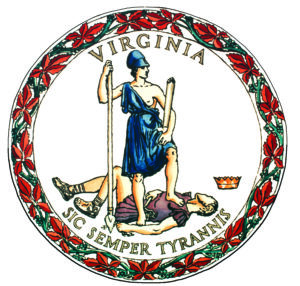Would you rather listen than read? Click on the audio file below.
This trail begins near the ruins of the stable to the right of Gunston Hall mansion. As you proceed towards the treeline, down the bluff, and across the meadow, you will enter what was once a fenced deer park. Beyond the enclosure were once sections of forest bordered by fields of cash crops. Today you will walk through woods that teem with a variety of animals, including lizards, snakes, frogs, eagles, and herons. The ecosystem is enriched by a wetland to the left of the trail. Finally, you will reach an overlook and a path down to the Potomac River.
Mason Neck is formed by Gunston Cove to the north, the Potomac River to the east, Occoquan Bay and Belmont Bay to the west, and the Occoquan River to the northwest. While today these waterways make Mason Neck a popular recreation spot, in the 18th century, they served as critical connections to ports like Colchester (where today’s Route 1 crosses the Occoquan River) and Alexandria.
During the Mason period, the Potomac river united–rather than divided–Maryland and Virginia. Like many well-to-do families in the region, the Masons owned plantations on both sides of the river. When you reach the end of the trail and look across the Potomac River, you will see a ridge. That Maryland land was once part of the Mason family holdings.
To connect their properties together, generations of Masons purchased boats and probably assigned enslaved watermen to operate the craft as ferries. These ferrymen helped transport raw materials such as corn, wheat, and lumber to market. They moved the sandstone that decorates Gunston Hall from a quarry near Quantico, and they delivered consumer goods such as fancy textiles, furniture, and ceramics from port towns. They also carried travelers on foot, and even animals and vehicles. Using the river was not without risk. When George Mason was nine years old, his father drowned while using the river to travel between the family’s estates.
The river was so important to George Mason and his neighbors that they wanted to create laws related to tolls and travel along the Potomac. Plus, Mason and his friends were confident that although it was hard to navigate west of today’s Great Falls, the Potomac could surely be improved to carry boats into undeveloped territory and economic opportunity. In 1775, at the request of George Washington, Mason wrote the Potomac River Bill for the Maryland and Virginia legislatures. As Mason put it, the Potomac was “a channel of the extensive trade of a rising empire.”
What will you learn about next?
Do you need a refresher on where you are on the property? Access the grounds map here.









